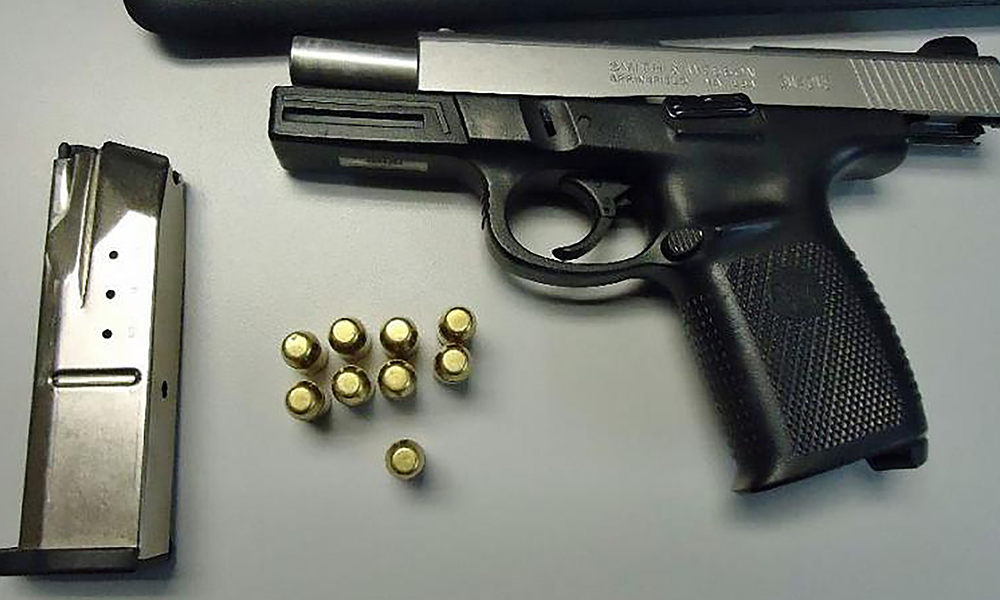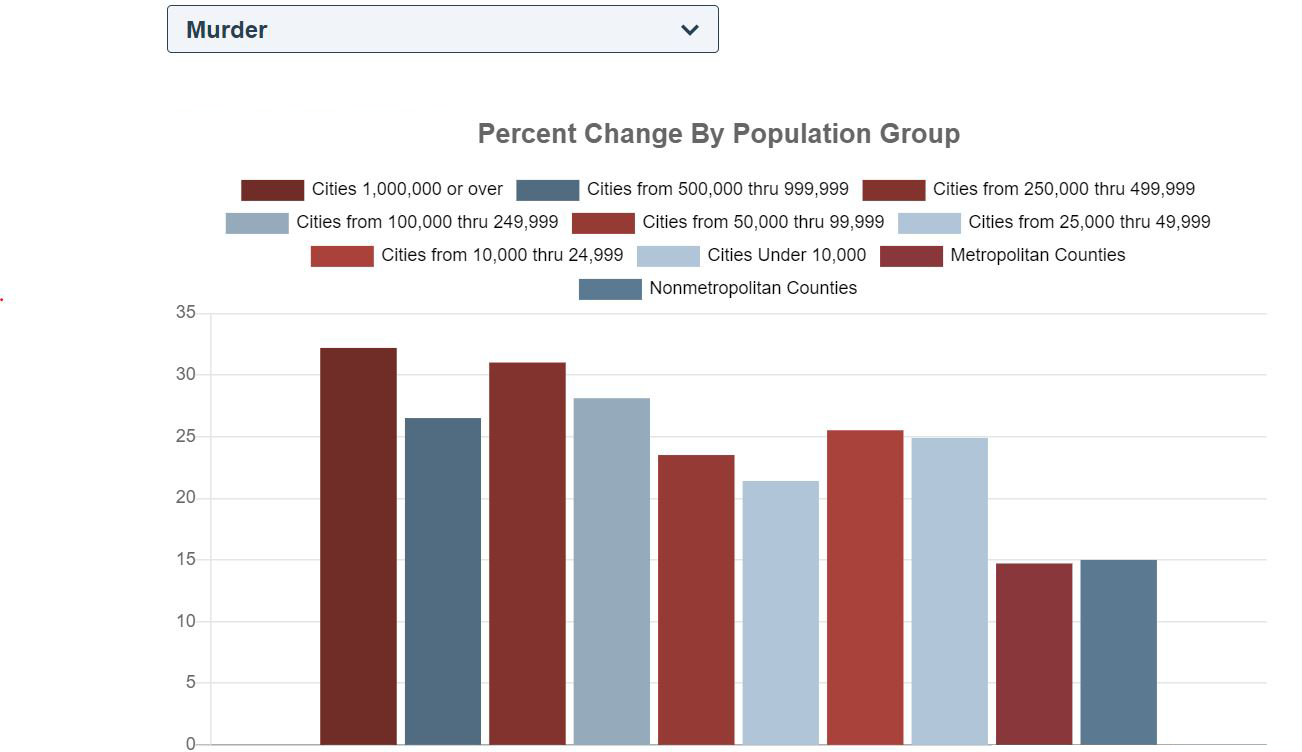
The COVID-induced spike in major city murder rates has been well-documented, but new data from the FBI shows just how bad the problem has become.
The latest Quarterly Uniform Crime Report shows a minimum 20% spike in the murder rate in every city that reported data. Cities of 1,000,000 residents or more saw a 32% rise in murder rates, cities between 250,000 and 499,999 residents experienced a 31% rise, and cities from 100,000 to 249,999 saw a 28% rise.
Cumulatively, the country experienced a higher homicide rate than any year since 1998, with 6.2 homicides per 100,000 people, according to the Washington Examiner. That’s a much lower number than 1980’s 10 murders per 100,000, but it’s 20% higher than 2019’s 5 homicides per 100,000.
The one-year spike is historic.
“We’ve never seen an increase like that. Previously the biggest one-year increase in murder was a 12.5% increase in the 1960s,” statistician and crime analyst Jeff Asher told the Examiner. “We’re really talking about unprecedented increases in murder.”

SEE ALSO: Massive Delays for FOID Card, CCW Permits in Illinois As Crime Spikes
The murder rate also rose in metro and non-metro counties, but not by as much as their urban counterparts. In 2020, metro counties saw a 14.7% rise and non-metro counties saw a 15% rise.
Aggravated assault also rose between 7-16% in all locations except cities with under 10,000 residents, where it dropped 0.1%.
The news isn’t all bad. Property crime was down between 4-14% across the board, rape was down between 11-22%, and robbery was down between 2-17%.
Anti-gun groups have been quick to blame the murder rate on this year’s record-setting gun sales.
The Trace, for example, published an article in July of 2020 linking an increase in gun sales to an increase in intentionally inflicted gun injuries and deaths. That idea has since been debunked, but that didn’t stop Giffords from proclaiming in February of this year, “latest surge in gun sales accompanied by wave of fatal violence.”
SEE ALSO: Mexico Proves More Gun Control Does Not Mean Less Crime
“Communities across America are experiencing a terrifying and deadly surge in gun violence. The increase in gun sales alongside this is alarming. We know that more guns in the hands of untrained people makes us less safe, yet the gun lobby continues to use fear and division to market their products and line their pockets. This is an ongoing American tragedy,” said Peter Ambler, Giffords Executive Director.
Anti-gun groups are seizing on a short-term rise in homicides to discredit a decades-long trend in the United States: violent crime rates have dropped precipitously since the 1990s even as gun sales have increased.
In 1991, the U.S. saw 758 reported violent crimes per 100,000 people. By 2014, that number had been cut in half to 361, according to researchers at Statista. Meanwhile, the number of firearms manufactured in the U.S. rose from 3.6 million in 1991 to 9 million in 2014. Not all these firearms ended up on the civilian marketplace, of course, but NICS check data confirms that vastly more guns are sold to civilians now than when violent crime was at its highest.
Anti-gun groups have not explained how gun sales account for this year’s rise in murder better than COVID-19, social unrest, and “defund the police” movements. They also haven’t explained how the spike in gun sales from less than 12 months ago can account for the murder rate today when the average “time-to-crime” (how long it takes a gun to move from legal purchase to crime) is something north of nine years.